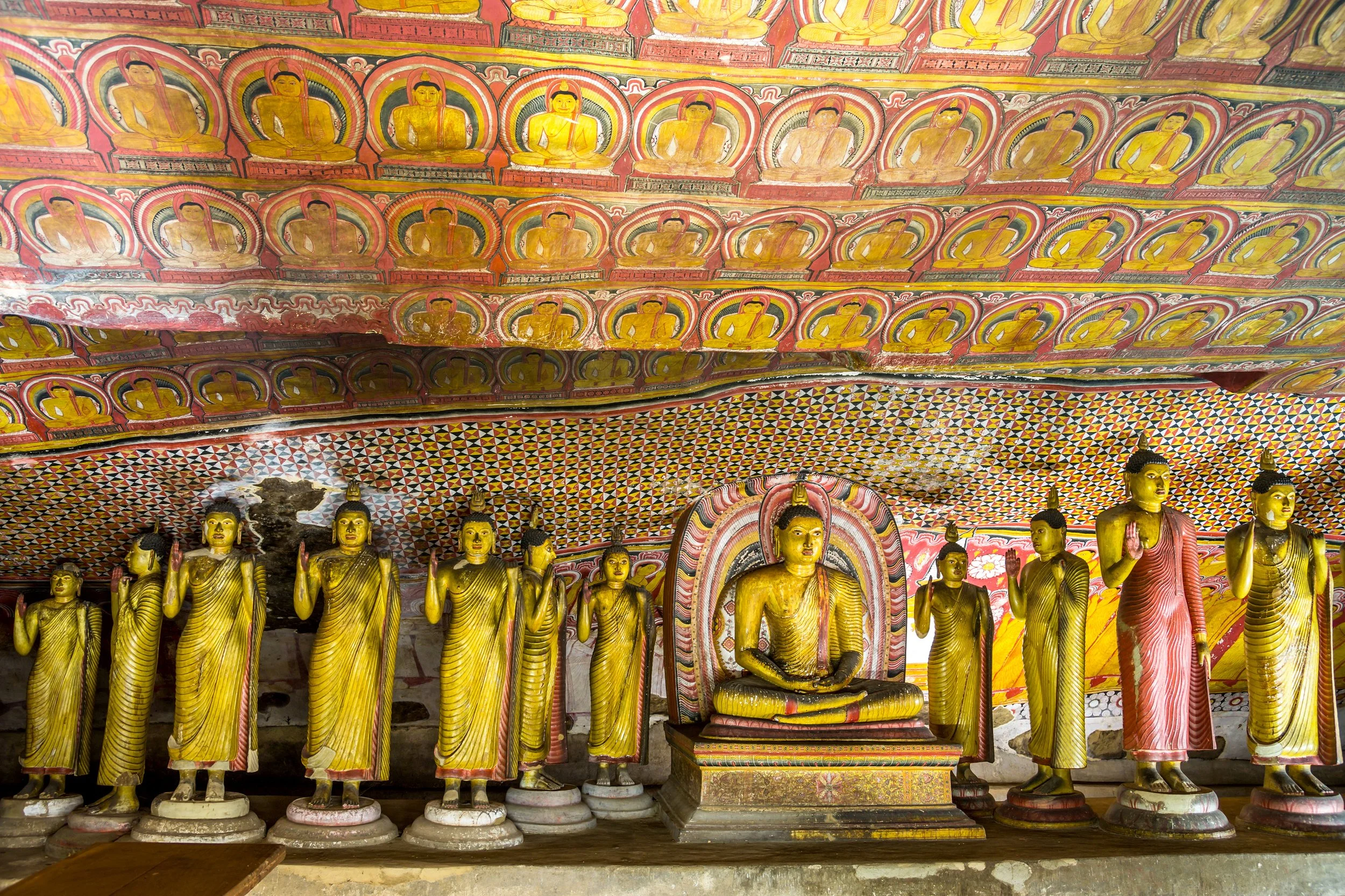Dambulla
At a Glance
This massive complex of cave temples feature paintings and statues relating to the Buddha's life and teachings. There are a total of 153 Buddha statues, three statues of Sri Lankan kings and four statues of gods and goddesses magnificently preserved in this incredible heritage site.
Click here for map link
The Story
Dambulla is the largest and best-preserved cave temple complex in Sri Lanka. The rock towers 160 m over the surrounding plains. There are more than 80 documented caves in the surrounding area. Major attractions are spread over five caves, which contain statues and paintings. These paintings and statues relate to the Buddha and his life. There are a total of 153 Buddha statues, three statues of Sri Lankan kings and four statues of gods and goddesses. The latter include Vishnu and Ganesha. The murals cover include the temptation by the demon Mara, and the Buddha's first sermon.
This temple complex dates back to the first century BCE. It has five caves under a vast overhanging rock, carved with a drip line to keep the interiors dry. In 1938 the architecture was embellished with arched colonnades and gabled entrances. Inside the caves, the ceilings are painted with intricate patterns of religious images following the contours of the rock. There are images of the Buddha and bodhisattvas, as well as various gods and goddesses.
The Dambulla cave monastery is still functional and remains the best-preserved ancient edifice in Sri Lanka. It dates from the third and second centuries BC, when it was already established as one of the largest and most important monasteries. King Valagamba of Anuradhapura is traditionally thought to have converted the caves into a temple in the first century BC. Exiled from Anuradhapura, he sought refuge here from South Indian usurpers for 15 years. After reclaiming his capital, the King built a temple in thankful worship.
Many other kings added to it later and by the 11th century, the caves had become a major religious centre and its use has continued to this day. King Nissanka Malla of Polonnaruwa gilded the caves and added about 70 Buddha statues in 1190. During the 18th century, the caves were restored and painted by the Kingdom of Kandy.


